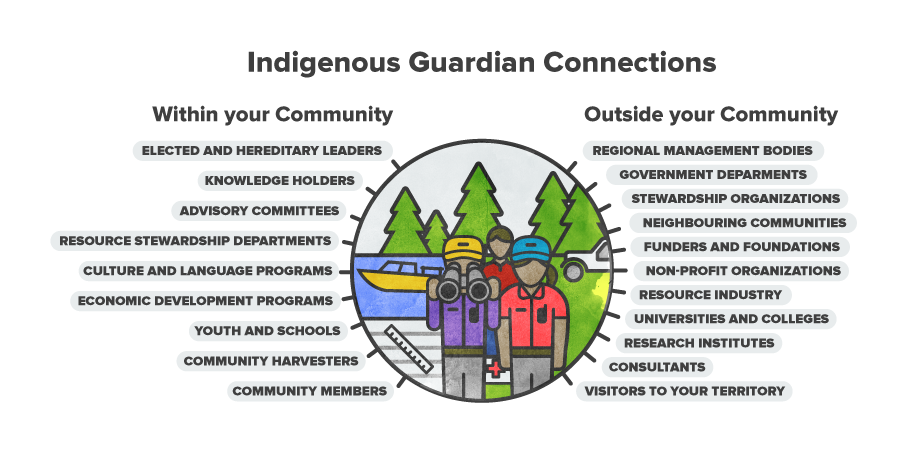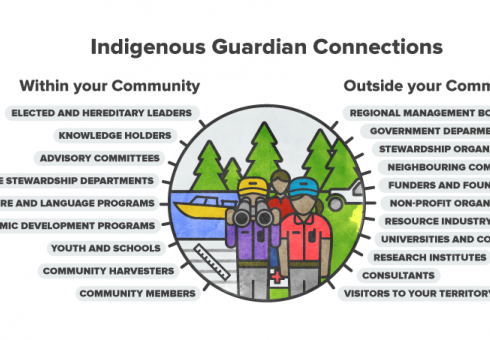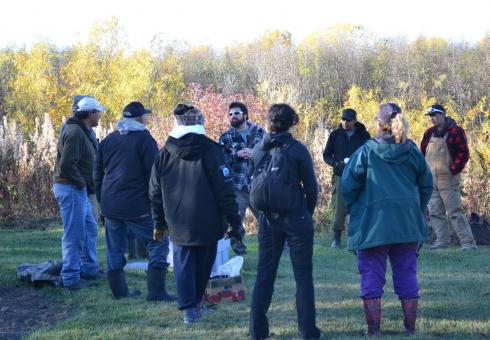Who should you reach out to and involve?
Many people in your community will have unique perspectives or knowledge related to your guardian program. Try to take the time to identify and engage different groups.
Consider creating connections with traditional or hereditary leaders, elected councils, managers and staff, related programs and organizations, elders, land and water users, harvesters, families, youth, and children. Each group may hold specialized knowledge that could contribute to your program. For instance:
- Elders may hold valuable knowledge about culture and traditionally used sites.
- Food harvesters and fishers may know where commercial or recreational activities are having a detrimental impact.
- Elected leaders may see bigger picture linkages such as how cultural site protection influences ecotourism opportunities or how ongoing management discussions may benefit from guardian activities.
How and when you engage people will depend on the kind of input, deliberations or decisions you need.


